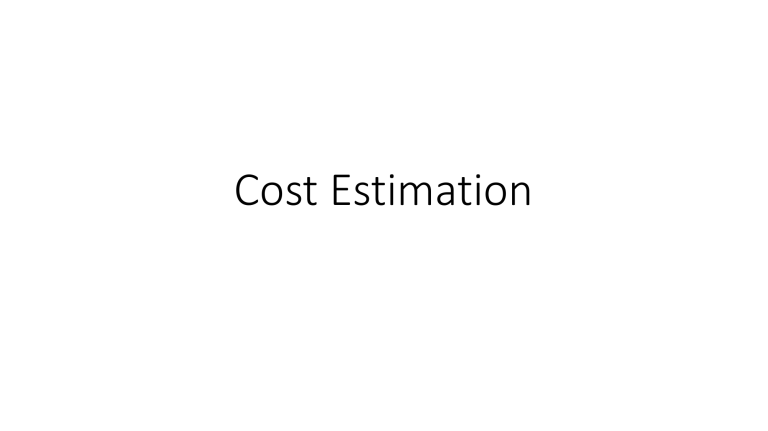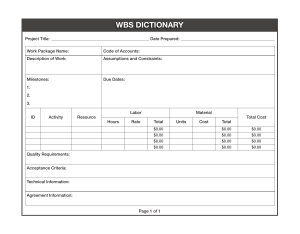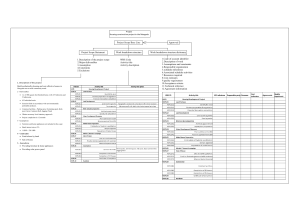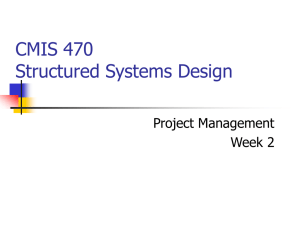
Cost Estimation 4 Principles of Cost Estimation 1. Cost estimation is used to predict the quantity, cost and price of the resources required by the scope of a project. A project might be any process that is started to perform work activities and/or create assets. The accuracy of the estimate depends heavily on the level of project scope definition: as the design and conditions of the project become better defined, so do the estimated values. 2. Cost estimation is needed to provide decision-makers with the means to make investment decisions, choose between alternatives and to set up the budget during the front end of projects. For this, estimates made by vendors and contractors need to be validated by clients as well. In later phases of the project, the budget estimate is used as a baseline to assess the performance of a project. Related to this principle, it is always challenging to collect and read the huge amount of cost data, which doesn’t help with the decision making. Analyzing and visualizing the cost data opens the doors to making the data useful and meaningful. The dashboards of a project control software system are the data-driven graphical representations of a project; dashboards can provide decisionmakers with a quick overview of a project’s progress and turn the data into decision points. 3. Estimating is done by breaking down the total scope of a project in manageable parts, to which resources can be assigned and cost. There are standardized ways of breaking down a project, like the Work Breakdown Structure (WBS) and the Cost Breakdown Structure (CBS), but depending on the needs of the project team and external parties multiple structures are often implemented to align reporting and sharing of cost data. Deliverable-Based Work Breakdown Structure A Deliverable-Based Work Breakdown Structure clearly demonstrates the relationship between the project deliverables (i.e., products, services or results) and the scope (i.e., work to be executed). Figure 1 is an example of a Deliverable-Based WBS for building a house Phase-Based Work Breakdown Structure In Figure 2, a Phase-Based WBS, the Level 1 has five Elements. Each of these Elements are typical phases of a project. The Level 2 Elements are the unique deliverables in each phase. Regardless of the type of WBS, the lower Level Elements are all deliverables. Notice that Elements in different Legs have the same name. A Phase-Based WBS requires work associated with multiple elements be divided into the work unique to each Level 1 Element. A WBS Dictionary is created to describe the work in each Element. How to Make a Work Breakdown Structure A good Work Breakdown Structure is created using an iterative process by following these steps and meeting these guidelines: 4. A cost estimate is more than a list of costs. It also includes a detailed Basis of Estimate (BOE) report that describes the assumptions, inclusions, exclusions, accuracy and other aspects that are needed to interpret the total project cost. Otherwise, it would be a meaningless number. The BOE is required to communicate the estimate to the various parties involved in the decision making but is also handy during closeout when the performance of the project is compared with other projects. It is the vital part often overlooked, that allows you to learn from your experience and mistakes. Cost estimation, however, is easier said than done. An accurate estimation method can be the difference between a successful plan and a failed one. Keep these 4 principles in mind and you already have a framework to start making estimates. Make sure to set up the estimate in a structured way to allow for an easy transition into project cost estimating software, which will help you make more solid and accurate estimates in the long run.



